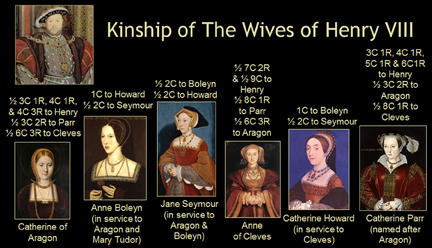IS THIS A PHOTO OF MY REAL FATHER?
Facial Resemblances Aren't Always
Reliable Indicators of Kinship
by Joelle Steele
 "Can you tell me if the man in this photo could be my real father?" That's a question people write and ask me from time to time. The question normally arises when they either do not know the identity of one of their parents, or they think that because they do not look like one of their parents that someone else is the real parent. They always have photos of their known parent standing next to people who they believe could be possible candidates for their unknown or wrongly-identified parent because they see a resemblance to themselves.
"Can you tell me if the man in this photo could be my real father?" That's a question people write and ask me from time to time. The question normally arises when they either do not know the identity of one of their parents, or they think that because they do not look like one of their parents that someone else is the real parent. They always have photos of their known parent standing next to people who they believe could be possible candidates for their unknown or wrongly-identified parent because they see a resemblance to themselves.
I analyze and compare facial features for the purpose of confirming or authenticating the identities of people in photographs. So, I have extensive experience in looking at faces — I've analyzed literally thousands. My answer to these kinds of inquiries is always the same: Comparing faces to see if they might be related is not a valid practice. Many people who are related look alike; some don't, including parents and children. Some family resemblances skip generations. Some people who are not related at all can look strikingly similar. Looking at photos to compare features will neither confirm nor deny a family relationship.
INHERITED FEATURES
People who are related can certainly resemble each other because there are many facial traits that can be inherited. Among them are hair and eye color, widow's peaks, chin clefts, hooked noses, etc. But when comparing photographs, these genetic traits are not always apparent, especially if you're analyzing faded or damaged photos in which the trait in question is in some way obscured, or if you want to ascertain hair or eye color but only have black and white photos. The absence of a chin cleft in a photo, for example, does not mean it isn't there, even if the photo is crystal clear. My father and my grandfather both had very pronounced chin clefts, but they are only visible in some of their photos. I inherited that chin cleft, but mine is not visible at all; you have to physically feel it to know it's there (clefts are a result of a cleft in the bone).
With inherited traits, none are unique to any one family. A trait such as the chin cleft may be found in many families. The same is true of widow's peaks, etc. That's why people who resemble each other are not necessarily related. But these so-called inherited traits are not always passed on directly or at all. My father did not get his mother's hooked nose. My brother and I didn't get it either. But my niece did – unless she got it from her mother's side of the family. A client of mine comes from a family in which all the women, and only the women, have extremely distinct widow's peaks. He has a photo of a 1788 painting of his 6x great-grandmother, and even she has the widow's peak. In his family, this is obviously a very strong genetic trait.
In the family of Henry VIII, his wives are all related to him and to each other, some very distantly. But if you look at their faces, you'll see that they all have a certain sameness about them. It's only a little in the features, but the real similarity is in their bone structure.

Not everyone has a family with strong resemblances. Some people who are related can look decidedly dissimilar. One of my clients comes from a family in which no one really looks that much like anyone else. The only thing that ties them together at all in terms of their appearance is their eye color, which is a very distinct, almost-turquoise, light green. Another of my clients was concerned that she might be adopted because she doesn't look like any of her siblings or like her parents. DNA proved she was not adopted and was definitely the child of her parents. After she heard this, she delved into her parents' photo albums and discovered that she resembled her great-grandmother. I also had a client who doesn't resemble his immediate family, but he looks just like his aunt, and his aunt and his mother do not resemble each other or their parents either, but his mother looks like her grandfather. This is the case with my own family (below) where both sides of the family who are from different countries have occasional resemblances and some resemblances skip a generation or two:

SUMMARY
If you're comparing photos to see if they are a match, facial features analysis is definitely the way to go. But, when it comes to identifying unknown relatives, facial features analysis is a severely limited and unreliable method for revising your family tree.

